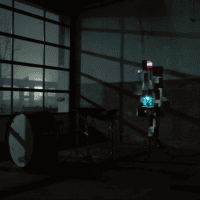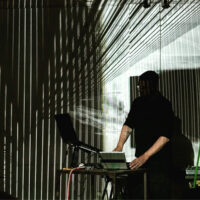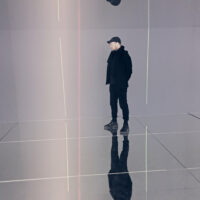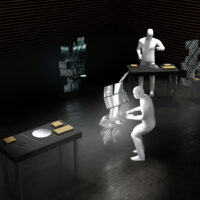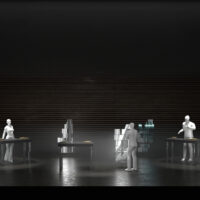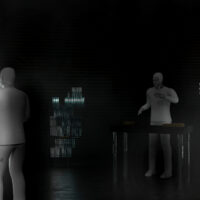Piece for 6 percussionists, 5 machines
Ways of [ ]ing is a composition for 11 musicians: 3 percussionists from HIIIT (formerly Slagwerk Den Haag), 3 percussionists from Percussions de Strasbourg, and 5 robotic percussion machines, developed and built by the Dutch composer and audiovisual artist Zeno van den Broek.
Inspired by James Bridle’s “Ways of Being: Animals, Plants, Machine: The Search for a Planetary Intelligence” (2022), the piece explores different forms of expression of intelligence, logic and (musical) structures.
Composition, concept: Zeno van den Broek
Artistic collaboration and movement: Rosabel Huguet Dueñas
Lights: Rui Monteiro
Sound: Olivier Pfeiffer
Technical manager: Laurent Fournaise
Performers: Hyoungkwon Gil, François Papirer, Yi-Ping Yang (Percussions de Strasbourg), Jonathan Bonny, Ryoko Imai, Kalina Vladovska (HIIIT)
Duration: 65′
Delegate producer : Muziekgebouw Amsterdam
Coproduction : HIIIT, Les Percussions de Strasbourg
With Ways of [ ]ing, Zeno van den Broek confronts us with a question that has intrigued mankind over centuries, but is ever so urgent in today’s world: how do we as humans relate to other forms of intelligence? Van den Broek created this composition for two percussion ensembles – HIIIT and Percussions de Strasbourg – and for four digital entities: robotic percussion machines with LED matrices that have been trained over time to interact with human percussionists. To train these robotic entities, Van den Broek fed their algorithms with rhythmic sounds from percussion players, but also with recordings of mechanical technologies such as construction pile drivers, steam engines and a weaving loom. The machines learned to react to different types of material and adjust their touch to what they were given, just as any human percussionist learned from their predecessors.
In three stages, Ways of [ ]ing investigates various forms of intelligence, logic and musical structures, creating spaces for percussionists and percussion machines to act individually and interact as collective in the live performance. The first stage, [absorb], shows the first moments of awareness, where the use of machines is mainly utilitarian, primitive even. The second stage, [evolve], takes along modes of interacting and learning through interaction, to the point where the machines develop a voice and find ways to speak up. In the final stage, [project], a level of equality is reached, opening possibilities to interact communal and free. Ways of [ ]ing alternates between shifting syncopated rhythms and improvised sequences for both humans and machines, leaving the listener to reflect on the nature of intelligence and the essence of our human nature.
Planning:
August 2025: Residency in Strasbourg
Septembre 10, 2025 : Premiere at Festival Gaudeamus, Tivoly Vredenburg, Utrecht, Netherlands (NL)
January 10, 2026 : FIBER Festival, Amsterdam, Netherlands (NL)

